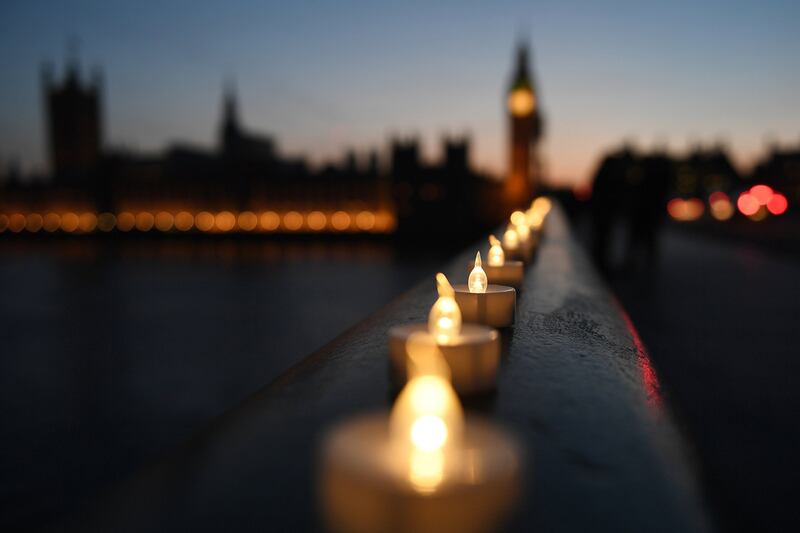In the aftermath of the Westminster attack last week in London, a young British woman was passing by the scene. She was caught on camera looking at her mobile phone. She happened to be a Muslim woman of colour wearing a headscarf; and suddenly, she was accused of all kinds of things by Islamophobes and bigots. Insensitivity; secretly being happy or joyful at the crime and so forth.
Her crime, it seemed, was that she was using her phone. Yet, many selfies were taken that day by white, non-Muslim Britons with Westminster in the background. No questioning of them or their motives was similarly on display. There’s a reason for that – and it is not pretty. Society continues to have one set of standards when it applies to those we consider to be of “us” (in this instance white and non-Muslim) and quite a different when it applies to “them” – especially when they are very “visibly Muslim”.
There is an underlying issue here. It is one I personally encounter, and have encountered many times over the years as a writer and scholar. I have written about all kinds of deeply controversial issues pertaining to political affairs in the United States, Europe and the Arab world. But there is one theme that attracts hate mail like no other. Whenever I have written a piece that humanises Muslims as members of our societies in the West – that is, as members of “us” as opposed to “them” – the floodgates open.
Following the attacks, I wrote an article detailing how important it was to recognise Muslim Britons as part and parcel of society, as opposed to demonising them en masse for the acts of a single individual. The response was a flurry of emails, tweets and comments that called for me to commit suicide, and my family along with me.
I’m not particularly bothered by the hate mail. I have been writing in the public arena for two decades, and I have long become immune to the keyboard warriors of various right-wing, left-wing, radical Islamist or authoritarian persuasions. But it occurs to me – and it should occur to all of us – if this is what happens to someone like myself, what about others in our societies who are constantly demonised far more deliberately?
After all, I am not the typical example of an “othered” Briton. Indeed, I am half Arab, and consciously aware of that. But as a scholar and author, I do not write as a community activist and do not consciously draw much attention to the various identities I am grateful to have. My last name is hardly indicative of a non-English background. In that regard, my “otherness” is generally invisible – and on top of benefiting from the privilege that accrues from being white, I’m also male.
In that regard, I differ quite a lot from the young woman who was demonised in front of Westminster. She is clearly and obviously an individual of colour; she is a woman; she is visibly an observant Muslim with a headscarf.
And yet, I still received and receive a barrage of hate mail when I write pieces that humanise Muslims in our societies of the West. If that is the case, then what kind of treatment is likely when it comes to “visible” Muslims of colour in our societies – not simply in the media or online, but in person? On our streets and in our cities and towns?
The answer, alas, is all too familiar. Increasingly over the years, societies in the West have mainstreamed anti-Muslim bigotry in the public sphere. The wider use of social media means that this kind of discourse can be spread more quickly and more easily than ever before. Social media can be used for many good things in this world, but it can also be used for highly dangerous ones as well.
The irony of the bigotry cannot be more stark. The attacker inspired bigotry about non-Britons, refugees and immigrants – but the attacker was British. He was from the same part of the United Kingdom and the same age as the right-wing populist Nigel Farage – but we obviously haven’t seen questions about why 51-year-old males from Kent are problematic. The young woman passing by the attack, as any close-up will show, was deeply distraught about it – as the photographer himself declared when she was vilified on social media. She was simply letting her family know she was all right. Unlike some of those taking selfies, she had helped others that day.
One British politician, Baroness Warsi, drew attention to this issue years ago when she said that Islamophobia had passed the “dinner-table test”, which meant it had become socially acceptable in the UK. If she, as a member of the ruling upper elite of British society, could notice it so starkly, how much worse must it have been for those who were not so privileged?
That issue hasn’t been resolved. If anything, it has become worse. And as long as it persists, it behoves us to speak out against it, and ensure there is no doubt that such anti-Muslim bigotry has no place in society. If it does, then, truly, British society has changed, and its claim to moral integrity indisputably impaired. That, surely, is precisely what the extremists who applauded the attack on Westminster and elsewhere all want.
Dr HA Hellyer is a senior non-resident fellow at the Atlantic Council in Washington and the Royal United Services Institute in London
On Twitter: @hahellyer





